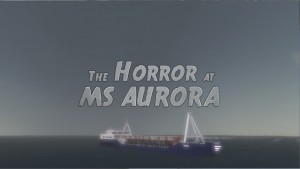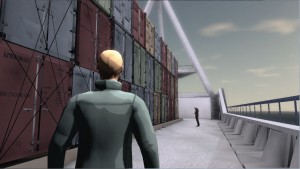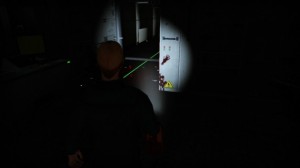Indie Horror: The Horror at MS Aurora
Posted by Rampant Coyote on October 27, 2014
 I like to encourage indies to take chances and experiment with game design. It’s an entirely selfish thing to ask, because it asks the developers to take risks for my potential benefit as a jaded old-school gamer who is tired of playing the same ol’, same ol’.
I like to encourage indies to take chances and experiment with game design. It’s an entirely selfish thing to ask, because it asks the developers to take risks for my potential benefit as a jaded old-school gamer who is tired of playing the same ol’, same ol’.
The problem here is “risk.” There’s a reason the big AAA studios fall back on the same old tired designs. When you are putting tens of millions of dollars behind a game’s development, you want to do everything you can to minimize risk and maximize returns. You can’t take a crapshoot with a $50 million budget.
Indies have a little bit more leeway with much smaller budgets, but the end results are only on a smaller scale. Most experiments fail. Maybe not totally, and they may yield some surprising results and fantastic lessons to learn from, but it’s a straight-up dice roll. Even if you do it right – starting tiny and iterating with a fallback plan – there are still a lot of unknown variables. Failure can still be devastating.
In the case of The Horror at MS Aurora, by 12 o’Clock Studios, the experiment seems to have been creating a tight, short horror “movie” played almost entirely by so-called “Quick-time events” (QTEs). These are not often favored by hard-core or old-school gamers, which would include me. Your mileage may vary.
 The game plays out (deliberately) like a B-horror movie, where you simply follow the prompts. Periodically you may have to stumble along without guidance, but the area is so small, and parts of the ship you aren’t supposed to visit are sealed off with no way to open doors, so it takes “linear” even beyond Dear Esther levels. Otherwise, as there are things to do – like making coffee (I’m not kidding, and it kinda acts as a tutorial) – you have to follow on-screen prompts and hit the buttons or move the mouse quickly or repeatedly to avoid a mishap or setback (or, later in the game, death). Sometimes you will have the choice between two options selected by key presses.
The game plays out (deliberately) like a B-horror movie, where you simply follow the prompts. Periodically you may have to stumble along without guidance, but the area is so small, and parts of the ship you aren’t supposed to visit are sealed off with no way to open doors, so it takes “linear” even beyond Dear Esther levels. Otherwise, as there are things to do – like making coffee (I’m not kidding, and it kinda acts as a tutorial) – you have to follow on-screen prompts and hit the buttons or move the mouse quickly or repeatedly to avoid a mishap or setback (or, later in the game, death). Sometimes you will have the choice between two options selected by key presses.
So it’s basically a “hit X to not die” kind of mechanic, as old as the Dragon’s Lair arcade game, but with occasional randomization of the keys that you have to press or mouse movements you make to avoid memorization as a strategy. The story itself is pretty short and slow-moving, but it feels longer and slower-moving due to the game mechanic and – for me at least – ease of failure, requiring a restart at the last checkpoint.
 The horror itself takes a page from H.P. Lovecraft, The Thing, and several other classics. You (and the crew) face a hungry, vicious, tentacled horror (from some ice in one of the cargo containers?) out in the middle of the ocean in isolation.
The horror itself takes a page from H.P. Lovecraft, The Thing, and several other classics. You (and the crew) face a hungry, vicious, tentacled horror (from some ice in one of the cargo containers?) out in the middle of the ocean in isolation.
I gotta admit a little bit of bias here: As I work with maritime simulators all day, I found the representation of the cargo ship & operations to be a little non-standard, which started the game with some abuse to my willing suspension of disbelief pretty early. But most players will not have that problem.
Unfortunately, this interesting experiment didn’t go well enough for 12 o’Clock Studios, which have since suspended operations. I’ve heard this was something of a student project which they took commercial, and the soundtrack (which I had via a bundle sale before I ever played the game) is really creepy and enjoyable in its own right. And of course, tentacled horror on a stranded ship at sea is just a ripe trope to exploit.
You can grab The Horror at MS Aurora now from Desura.
Filed Under: Impressions, Indie Horror Games - Comments: Comments are off for this article